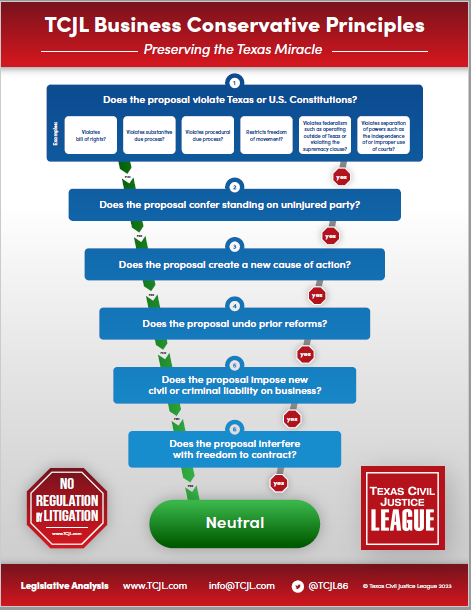 In a case involving a sitting Travis County district judge and three former justices of the Austin Court of Appeals, the Texas Supreme Court has reversed a decision by the Austin Court of Appeals upholding a trial court order granting the judicial defendants relief from a vexatious litigant.
In a case involving a sitting Travis County district judge and three former justices of the Austin Court of Appeals, the Texas Supreme Court has reversed a decision by the Austin Court of Appeals upholding a trial court order granting the judicial defendants relief from a vexatious litigant.
Mary Louise Serafine v. The Honorable Karin Crump, The Honorable Bob Pemberton, The Honorable Melissa Goodwin, and The Honorable David Puryear (No. 23-0272; June 21, 2024) arose from a lawsuit filed by an Austin attorney against the judges for alleged violations of her Fourteenth Amendment Rights. The judicial defendants moved for a determination that the attorney is a vexatious litigant (see Ch. 11, CPRC), should be required to furnish security for the defendants’ benefit, and be barred from filing pro se any new litigation in Texas state court without permission from the appropriate administrative law judge. The trial court agreed and granted both pre-trial relief and $5,000 in security. Plaintiff filed an interlocutory appeal. The court of appeals affirmed the trial court’s finding that plaintiff is a vexatious litigant and the award of pre-filing relief. The court, however, found that it did not have jurisdiction to hear the security issue, since the statute authorizing security does not explicitly provide for interlocutory relief.
Section 11.054(1)(A), CPRC, requires a defendant seeking a finding that a person is a vexatious litigant to show “(1) that there is not a reasonable probability that the plaintiff will prevail in the litigation against the defendant,” and (2) that the plaintiff “in the seven-year period immediately preceding the date the defendant ma[de] the [vexatious-litigant] motion . . . , has commenced, prosecuted, or maintained at least five litigations as a pro se litigant other than in a small claims court that have been . . . finally determined adversely to the plaintiff.” Consequently, the court’s analysis must determine “reasonable probability that the plaintiff will prevail,” which litigation falls within the seven-year period, which “litigations” count against the five, and what “pro se” means. The question before SCOTX was how to count the number of “litigations” for purposes of applying the statute.
In a per curiam opinion, SCOTX reversed the court of appeals’ determination that the requisite “five litigations” existed based on statutory construction. For purposes of counting separate “litigation,” the court of appeals read the statute to say that litigation moving from a trial court to an appellate court leads to “new litigation” and “that counting multiple appeals (and original proceedings) arising out of the same suit in a trial court does not offend Chapter 11” (citation omitted). In this case, the judicial defendants submitted evidence of 10 proceedings that plaintiff “commenced” or “maintained,” including a federal court case that ended in a take nothing judgment against plaintiff, a U.S. 5th Circuit ruling in the federal case, a ruling adverse to plaintiff in a case filed in Travis County district court against Judge Crump, a court of appeals opinion, an original proceeding for equitable relief decided against plaintiff, another original proceeding for mandamus denied by the 5th Circuit, and a denial of plaintiff’s petition for writ of certiorari in the U.S. Supreme Court. According to the court of appoeals, these were more than enough to meet the test, and the Court found that even though some of the actions were commenced outside the seven-year period, they were all “maintained” during the period.
SCOTX disagreed, holding “that filing a notice of appeal—or later, a petition for review—does not commence a new civil action; it transfers jurisdiction over the same civil action, which is now pending in an appellate court for its review of the judgment” (citations omitted). Consequently, a civil action filed in a trial court, followed by an appeal and petition for review in the ordinary course, counts as a single “litigation” for purposes of the statute. The Court did notdecide, however, how to count mandamus petitions, simply assuming for purposes of this case that the court of appeals properly included them. Applying the rule that a single civil action in its stages of appeal equals one litigation, the Court found that Serafine maintained four “litigations,” not the statutorily required five.
In our report on the court of appeals’ decision, we wondered whether SCOTX would weigh in to address the split of authority in the courts of appeals, but thought that the court of appeals got it right and that continuing to beat a dead case by serially appealing it and filing original proceedings arising out of it constituted vexatious litigation. While we were quite obviously mistaken (not for the first nor for the last time!), we have nothing but compassion for the four very fine jurists who have had to deal with these “litigations,” regardless of their number. At some point, enough is enough, and that point was reached in this case a long time ago.








